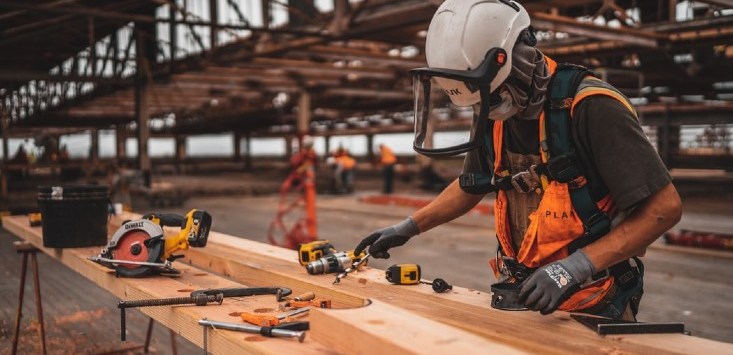
Wages are up and profits are down as the unemployment rate hovers at record lows and businesses scour the country, desperate for available workers.
But where are workers taking home the gravy? In what industries is the labour market truly tight? With the latest data release from the ABS, we have answers to this vital question, and the results show a crucial lesson about where power lies in the Australian economy.
Wages are a hot button issue right now, because most people are going backwards. Wages are increasing, yes, but at a rate far below inflation, on average.
Inflation is also squeezing businesses that have to walk the fine line between absorbing cost increases and upsetting customers.
In some places, profit per sale is up, while in others, higher revenues are not creating higher profits. As the next chart shows, in Wholesale trade and Other Services higher sales recently have delivered higher profit per sale, but in Finance and insurance profits per sale are declining.

Profit is vital context for understanding wages. In places with rising profit per sale, wages can afford to rise. In places where profit is being squeezed, lifting wages is more difficult.
So if we find places where wages are rising as a share of sales even where profit is falling, that will tell us the parts of the labour market that are truly tightest. The next chart shows the change in profit to sales ratio vs the change in wages to sales ratio. It compares three years ago to this year. The top part of the graph shows where workers are taking home more of every sale. It includes construction, IT and media, administration and professionals.

The really tight labour markets are those at the top left: IT and media; and professionals. In those businesses, the wages share of each sale is higher than pre-COVID, despite profit getting less share. Finance stands out too — despite falling profits on every sale, workers haven’t had to suffer much. What these industries have in common are office work and educated workers.
Meanwhile, in mining, the wages share of sales is falling even as the profit share is rising. These are places where the labour market is much less tight (in mining it is because as mining moves from development to production it automates more and uses fewer staff members).
The same is doubtless true in wholesale trade and manufacturing, where robots compete for any job opening.
The COVID-19 period has accelerated structural change that would otherwise have taken far longer. We buy far more online and companies are innovating as they come face-to-face with labour shortages. Robots and computer systems are doing a lot of what was once done by hand. The truth is that automation and artificial intelligence AI could eventually come for many, many jobs.
“The increasing sophistication of AI technology is posing a threat to high-paid Australian jobs, as AI can automate labour-intensive tasks more cost-effectively and efficiently.” That’s a quote from the new OpenAI language generation engine, which should send a shiver down the spine of anyone who uses words for a living.
“AI can provide assistance to high-paid workers, but it cannot replace them entirely due to its limited ability to think critically and creatively,” it continued.
For now, jobs that have unpredictable components are safe. Whether you’re crawling in roof spaces to solve air-conditioning problems or making legal judgments, your job is probably irreplaceable for quite some time. It’s the predictable jobs in predictable environments — factories, established mines, warehouses — where companies will hire robots when they can’t find people.
Handpicked for you

Opinion: Why small businesses will hurt a little more in 2023



COMMENTS
SmartCompany is committed to hosting lively discussions. Help us keep the conversation useful, interesting and welcoming. We aim to publish comments quickly in the interest of promoting robust conversation, but we’re a small team and we deploy filters to protect against legal risk. Occasionally your comment may be held up while it is being reviewed, but we’re working as fast as we can to keep the conversation rolling.
The SmartCompany comment section is members-only content. Please subscribe to leave a comment.
The SmartCompany comment section is members-only content. Please login to leave a comment.